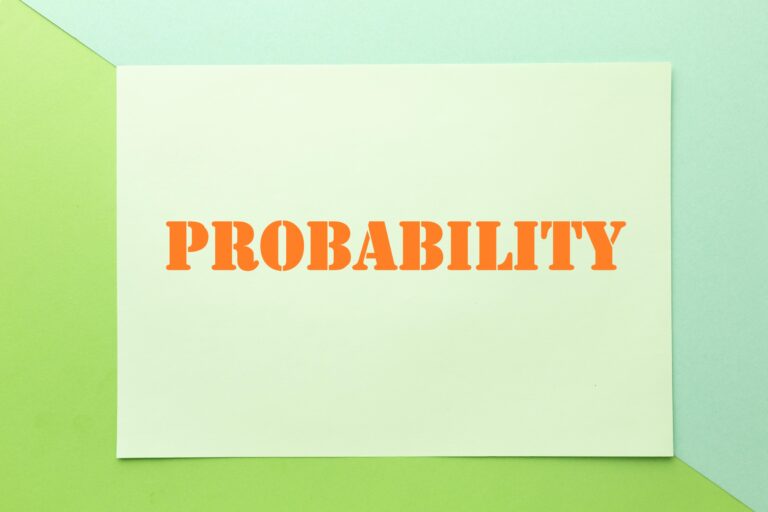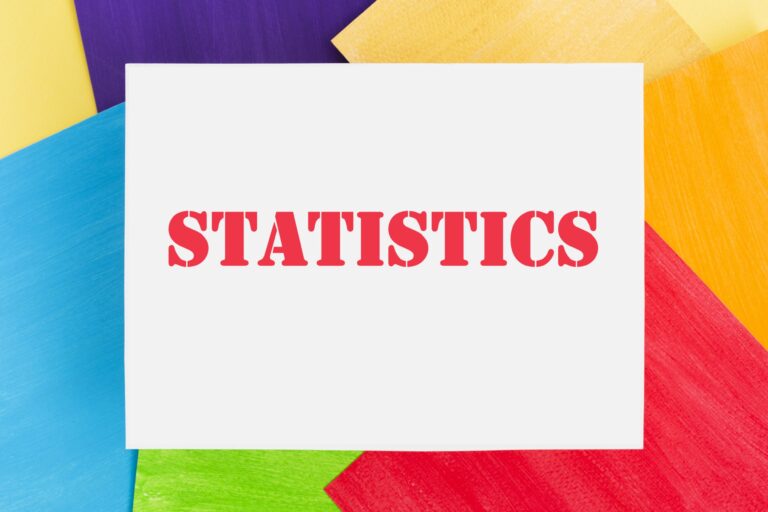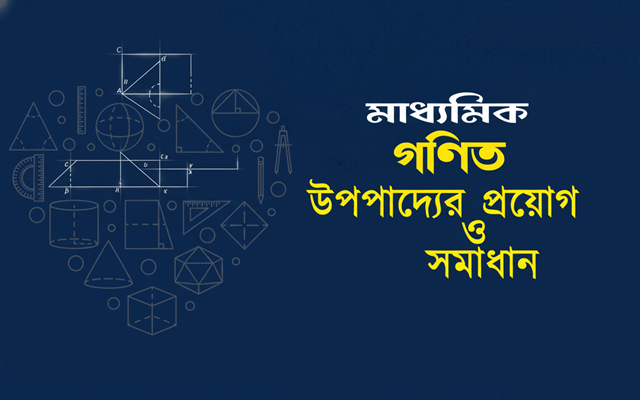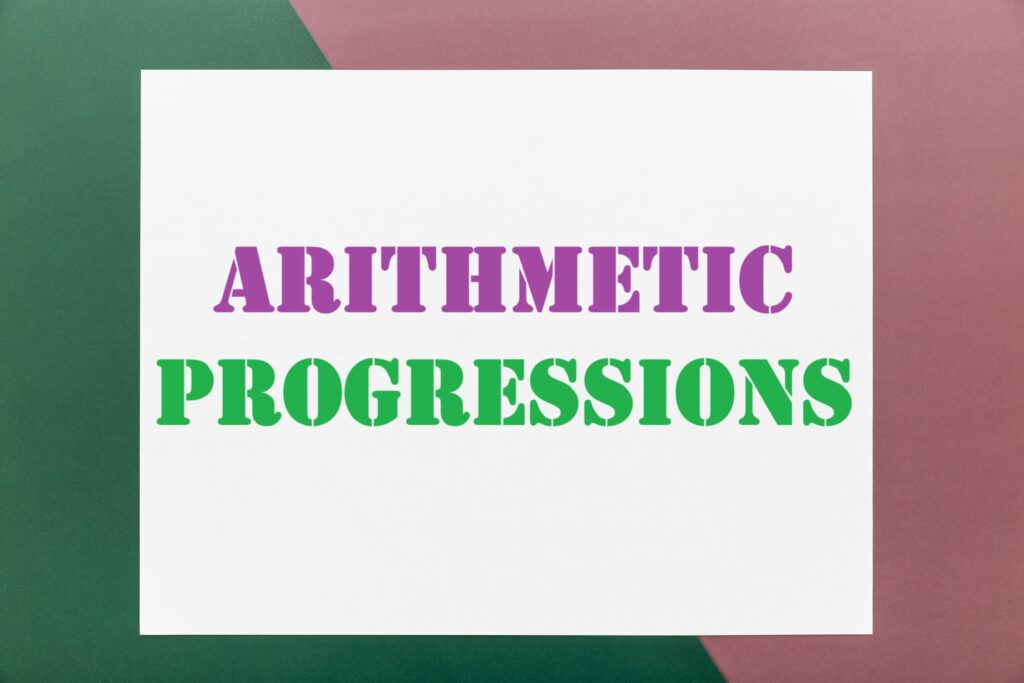
Arithmetic Progressions
Arithmetic Progressions
Sequences, Series and Progressions
A sequence is a finite or infinite list of numbers following a specific pattern. For example, 1, 2, 3, 4, 5,… is the sequence, an infinite sequence of natural numbers.
A series is the sum of the elements in the corresponding sequence. For example, 1 + 2 + 3 + 4 + 5….is the series of natural numbers. Each number in a sequence or a series is called a term.
A progression is a sequence in which the general term can be can be expressed using a mathematical formula.
l, (l – d), (l – 2d) ……
The general term of this AP is given by an = ![]() + (n – 1)(-d)
+ (n – 1)(-d)
When we are given an algebraic formula for the general term of the sequence:
Step 1: Obtain an.
Step 2: Replace n by (n + 1) in an to get an+1
Step 3: Calculate an+1 – an
Step 4: Check the value of an+1 – an.
If an+1 – an is independent of n, then the given sequence is an A.P. Otherwise, it is not an A.P.
OR
A list of numbers a1, a2, a3…… is an A.P, if the differences a2 – a1, a3 – a2, a4 – a3 … give the same value, i.e., ak+1 – ak is same for all different values of k.
|
Number of terms |
Terms |
Common difference |
|
3 |
a – d, a, a + d |
d |
|
4 |
a – 3d, a – d, a + d, a + 3d |
2d |
|
5 |
a – 2d, a – d, a, a + d, a + 2d |
d |
|
6 |
a – 5d, a – 3d, a – d, a + d, a + 3d, a + 5d |
2d |
It should be noted that in case of an odd number of terms, the middle term is ‘a’ and the common difference is ‘d’ while in case of an even number of terms the middle terms are a – d, a + d and the common differences is 2d.
If three number a, b, c (in order) are in A.P. Then,
b – a = c – b = common difference
⇒ 2b = a + c
Thus a, b and c are in A.P., if and only if 2b = a + c. In this case, b is called the Arithmetic mean of a and c.
Sn=n2[2a+(n−1)d]
where ‘a’ is the first term, ‘d’ is the common difference and ‘n’ is the total number of terms.
Sn=n2[a+l]
where ‘a’ is the first term and ‘λ’ is the last term.
The difference between two consecutive terms in an AP, (which is constant) is the “common difference“(d) of an A.P. In the progression: 2, 5, 8, 11, 14 …the common difference is 3.
As it is the difference between any two consecutive terms, for any A.P, if the common difference is:
A finite A.P will have the last term, whereas an infinite A.P won’t.
Finite sets are the sets having a finite/countable number of members. Finite sets are also known as countable sets as they can be counted. The process will run out of elements to list if the elements of this set have a finite number of members.
Examples of finite sets:
P = {0, 3, 6, 9, …, 99}
Q = {a : a is an integer, 1 < a < 10}
A set of all English Alphabets (because it is countable).
Another example of a Finite set:
A set of months in a year.
M = {January, February, March, April, May, June, July, August, September, October, November, December}
n (M) = 12
It is a finite set because the number of elements is countable.
Cardinality of Finite Set
If ‘a’ represents the number of elements of set A, then the cardinality of a finite set is n(A) = a.
So, the Cardinality of the set A of all English Alphabets is 26, because the number of elements (alphabets) is 26.
Hence, n (A) = 26.
Similarly, for a set containing the months in a year will have a cardinality of 12.
So, this way we can list all the elements of any finite set and list them in the curly braces or in Roster form.
Properties of Finite sets
The following finite set conditions are always finite.
Few Examples:
P = {1, 2, 3, 4}
Q = {2, 4, 6, 8}
R = {2, 3)
Here, all the P, Q, R are the finite sets because the elements are finite and countable.
R
⊂
P, i.e R is a Subset of P because all the elements of set R are present in P. So, the subset of a finite set is always finite.
P U Q is {1, 2, 3, 4, 6, 8}, so the union of two sets is also finite.
The number of elements of a power set = 2n.
The number of elements of the power set of set P is 24 = 16, as the number of elements of set P is 4. So it shows that the power set of a finite set is finite.
Non- Empty Finite set
It is a set where either the number of elements are big or only starting or ending is given. So, we denote it with the number of elements with n(A) and if n(A)is a natural number then it’s a finite set.
Example:
S = {a set of the number of people living in India}
It is difficult to calculate the number of people living in India but it’s somewhere a natural number. So, we can call it a non-empty finite set.
If N is a set of natural numbers less than n. So the cardinality of set N is n.
N = {1,2,3….n}
X = x1, x2, ……, xn
Y = {x : x1 ϵ N, 1 ≤ i ≤ n}, where i is the integer between 1 and n.
Can we say that an empty set is a finite set?
Let’s learn what is an empty set first.
An empty set is a set which has no elements in it and can be represented as { } and shows that it has no element.
P = { } Or ∅
As the finite set has a countable number of elements and the empty set has zero elements so, it is a definite number of elements.
So, with a cardinality of zero, an empty set is a finite set.
What is Infinite set?
If a set is not finite, it is called an infinite set because the number of elements in that set is not countable and also we cannot represent it in Roster form. Thus, infinite sets are also known as uncountable sets.
So, the elements of an Infinite set are represented by 3 dots (ellipse) thus, it represents the infinity of that set.
Examples of Infinite Sets
Cardinality of Infinite Sets
The cardinality of a set is n (A) = x, where x is the number of elements of a set A. The cardinality of an infinite set is n (A) = ∞ as the number of elements is unlimited in it.
Properties of Infinite Sets
Let’s compare the differences between Finite and Infinite set:
The sets could be equal only if their elements are the same, so a set could be equal only if it is a finite set, whereas if the elements are not comparable, the set is infinite.
|
Factors |
Finite sets |
Infinite sets |
|---|---|---|
|
Number of elements |
Elements are countable |
The number of elements is uncountable |
|
Continuity |
It has a start and end elements |
It is endless from the start or end. Both the sides could have continuity |
|
Cardinality |
n(A) = n, n is the number of elements in the set |
n(A) = ∞ as the number of elements are uncountable |
|
union |
Union of two finite sets is finite |
Union of two infinite sets is infinite |
|
Power set |
The power set of a finite set is also finite |
The power set of an infinite set is infinite |
|
Roster form |
Can be easily represented in roster form |
As the set in infinite set can’t be represented in Roster form, so we use three dots to represent the infinity |
How to know if a Set is Finite or Infinite?
As we know that if a set has a starting point and an ending point both, it is a finite set, but it is infinite if it has no end from any side or both sides.
Points to identify a set is whether a finite or infinite are:
An infinite set is endless from the start or end, but both the side could have continuity unlike in Finite set where both start and end elements are there.
If a set has the unlimited number of elements, then it is infinite and if the elements are countable then it is finite.
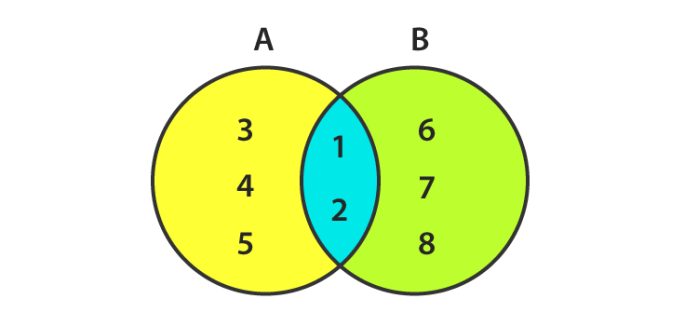
Here in the above picture,
A = {1, 2, 3, 4, 5}
B = {1, 2, 6, 7, 8}
A U B = {1, 2, 3, 4, 5, 6, 7, 8}
A∩B = {1, 2}
Both A and B are finite sets as they have a limited number of elements.
n(A) = 5 and n(B) = 5
AUB and A∩B are also finite.
So, a Venn diagram can represent the finite set but it is difficult to do the same for an infinite set as the number of elements can’t be counted and bounced in a circle
Important Questions
Multiple Choice questions-
1. The nth term of an A.P. is given by an = 3 + 4n. The common difference is
(a) 7
(b) 3
(c) 4
(d) 1
2. If p, q, r and s are in A.P. then r – q is
(a) s – p
(b) s – q
(c) s – r
(d) none of these
3. If the sum of three numbers in an A.P. is 9 and their product is 24, then numbers are
(a) 2, 4, 6
(b) 1, 5, 3
(c) 2, 8, 4
(d) 2, 3, 4
4. The (n – 1)th term of an A.P. is given by 7,12,17, 22,… is
(a) 5n + 2
(b) 5n + 3
(c) 5n – 5
(d) 5n – 3
5. The nth term of an A.P. 5, 2, -1, -4, -7 … is
(a) 2n + 5
(b) 2n – 5
(c) 8 – 3n
(d) 3n – 8
6. The 10th term from the end of the A.P. -5, -10, –15,…, -1000 is
(a) -955
(b) -945
(c) -950
(d) -965
7. Find the sum of 12 terms of an A.P. whose nth term is given by an = 3n + 4
(a) 262
(b) 272
(c) 282
(d) 292
8. The sum of all two digit odd numbers is
(a) 2575
(b) 2475
(c) 2524
(d) 2425
9. The sum of first n odd natural numbers is
(a) 2n²
(b) 2n + 1
(c) 2n – 1
(d) n²
10. The number of multiples lie between n and n² which are divisible by n is
(a) n + 1
(b) n
(c) n – 1
(d) n – 2
Very Short Questions:
4n + 3, 3n2 + 5, n2 + 1 give reason.
Short Questions :
(i) The cost of digging a well after every meter of digging, when it costs 150 for the first meter and rises by 50 for each subsequent meter.
(ii) The amount of money in the account every year, when 10,000 is deposited at simple interest at 8% per annum.
Long Questions :
Case Study Questions:

On the basis of above information, answer the following questions

Assertion Reason Questions-
Assertion: 184 is the 50th term of the sequence 3, 7, 11, …………
Reason: The nth term of A.P. is given by an = a + (n – 1)d
Assertion: The nth term of A.P. is given by an = a + (n – 1)d
Reason: Common difference of the A.P. a, a + d, a + 2d, …….., is given by d = 2nd term – 1st term.

